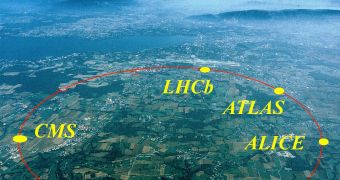Research scientists and physicists are making the final preparations for the world's largest physics experiment, which will produce an impressive amount of data. Universities across the United States and the world are hoping the CERN's Large Hadron Collider will determine the nature of matter.
Computer scientists and technicians are the busiest, since the experiment will produce a mountain of data that will have to be transmitted to a large number of Universities and laboratories around the world in the same time.
Thomas Hacker, a research assistant professor in Purdue University's Discovery Park Cyber Center and with Information Technology at Purdue (ItaP), says: "Researchers usually have to be in the same location as the instrument to access to the data. In this case, to bring the data to the researchers, we are building a huge scientific instrument that spans the globe to bring the data to the researchers."
The CERN collider will accelerate protons in the hope of catching a glimpse of the Big Bang, or at least the subatomic particles that are thought to have last been seen at the big event 10 billion to 15 billion years ago that led to the formation of the universe.
The applications involving trillions of collisions of protons that will take place from November will generate 15,000 terrabytes of data per year, which represents seven times all the information in all the university libraries in the United States.
"Once this data is distributed to the physicists at the universities, they will require massive amounts of computing power and data storage in order to analyze it," Hacker says. "When the data transfer is live, we will stream data out to physicists as we quickly as we can - real time if possible."
The project, called CERN CMS will search for never-before-detected subatomic particles, especially a particle known as Higgs boson, which is a missing piece in the jigsaw puzzle of the theory of particle physics (boson is the name physicists give subatomic particles with particular properties).
The discovery of this elusive particle would confirm the existence of an entirely new type of matter.

 14 DAY TRIAL //
14 DAY TRIAL //